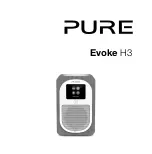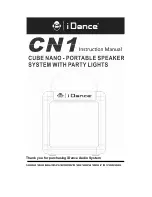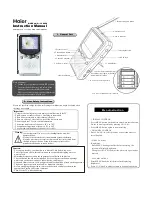
Condensers
The terms “condensers” and “capacitors” may be used
interchangeably.They are electrical devices that store energy
within themselves (Figure 2.36).
A simple condenser (capacitor) consists of two metal plates
separated by a small air space or a layer of insulating
material called a “dielectric.”
Condenser Operation
Whenever two conducting materials are separated by an
insulating material (dielectric), they have the ability to store
electrical energy. If a source of (DC) voltage is connected
between the two conducting materials of a capacitor
(condenser), a current will flow for a certain length of time.
The current initially will be relatively large but will rapidly
diminish to zero. A certain amount of electrical energy will
then be stored in the capacitor.
If the source of the voltage is removed and the conductors
of the capacitor are connected to the two ends of a resistor,
a current will flow from the capacitor through the resistor
for a certain length of time.The current initially will be
relatively large but, will rapidly diminish to zero.When the
current reaches zero, the capacitor will have dissipated the
energy it had stored as heat energy in the resistor.The
capacitor will then be said to be “discharged” (Figure 2.37).
However, if a wire is connected between the two plates, (if
you touch the two capacitor wires together) the excess
electrons of the negative plate pass through the wire as
current flow to neutralize the positive charge on the positive
plate.
Condensers in a DC Circuit
A condenser in a (DC) circuit permits current to flow only
while the plates are being charged, which is momentarily.
After the plates are fully charged, the condenser becomes an
“open,” -in a (DC) circuit.
Condensers in an AC Circuit
In an (AC) circuit, the continuous reversal of polarity causes
the plates to charge first in one direction, then the other.
Thus, in an (AC) circuit, there is a constant current flow to
and from the plates, although current does not actually flow
through the dielectric.
The Use of Condensers
Condensers can cause current to “lead” voltage. (Voltage
“lead” is discussed later in “Generator Systems”) They are
sometimes used in (AC) circuits to neutralize the
undesirable effects of lagging current or inductive reactance.
Condensers are also used to block (DC) current from
entering a circuit.
32
Section 2 • Generator Components & Systems
Portable Generator Familiarization & Troubleshooting Guide
Figure 2.36 — Typical Condenser With Symbol
Figure 2.37— Charge and Discharge of a Condenser
Содержание 86262GS
Страница 20: ...Section 1 Generator Fundamentals Portable Generator Familiarization Troubleshooting Guide 18...
Страница 56: ...54 Section 2 Generator Components Systems Portable Generator Familiarization Troubleshooting Guide...
Страница 61: ...59 Section 3 Generator Diagnostics and Adjustments Portable Generator Familiarization Troubleshooting Guide...
Страница 94: ...92 Section 3 Generator Diagnostics and Adjustments Portable Generator Familiarization Troubleshooting Guide...
Страница 110: ...108 Section 4 Generator Assemblies Portable Generator Familiarization Troubleshooting Guide...
Страница 117: ...115 Section 4 Generator Assemblies Portable Generator Familiarization Troubleshooting Guide...
Страница 118: ...116 Section 4 Generator Assemblies Portable Generator Familiarization Troubleshooting Guide...
Страница 119: ...GENERAC TORQUE TABLE Appendix A Portable Generator Familiarization Troubleshooting Guide 117...
Страница 125: ...123 Appendix A Portable Generator Familiarization Troubleshooting Guide...
Страница 126: ...Appendix A Portable Generator Familiarization Troubleshooting Guide 124...
Страница 127: ......
















































